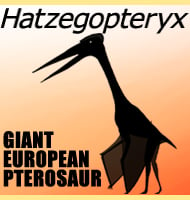Vayuraptor
In Depth Vayuraptor is a genus of coelurosaurian theropod dinosaur that lived in Thailand during the Early Cretaceous. With the first fossils of the genus being discovered in the Sao Khua Fomation, Vayuraptor possibly shared its habitat with the dinosaurs Phuwiangvenator (which was also named in the same paper as Vayuraptor), Kinnareemimus, Siamosaurus, Siamotyrannus and … Read more
